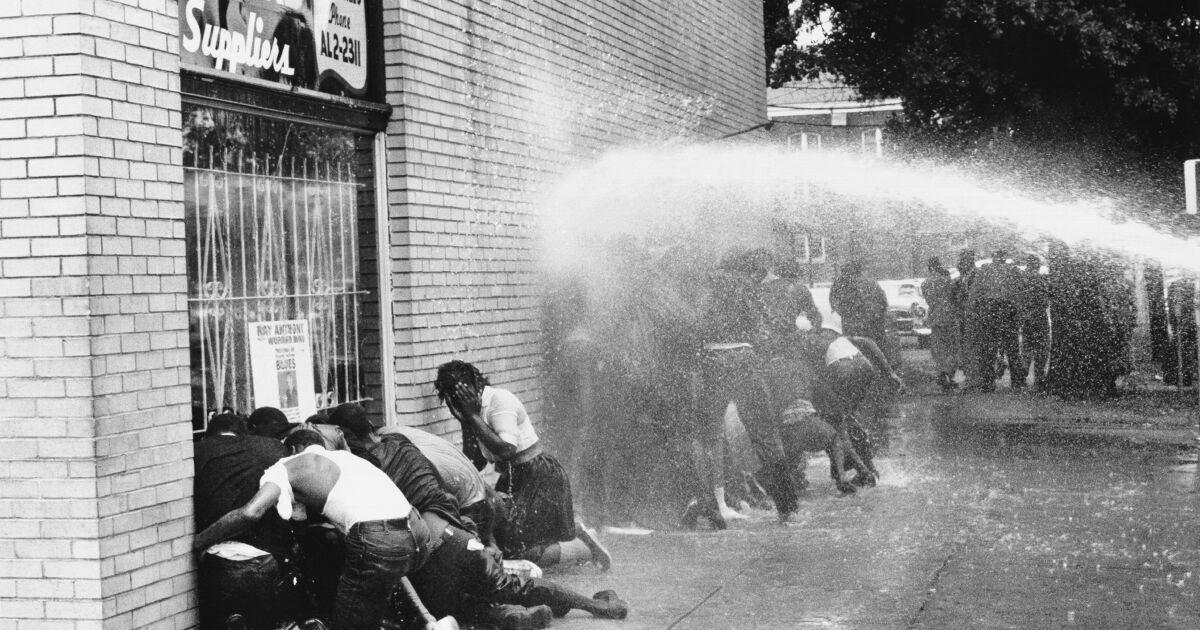
I never met Harry Belafonte but for the last three years I’ve thought about him every day.
Over those years, I researched and wrote a book on Project Confrontation, the campaign in the spring of 1963 in Birmingham, Ala., to break segregation once and for all or be broken by it. I believe that what happened in Birmingham — 10 weeks of nonviolent protest and the brute force levied against it — forever altered the trajectory of America.
Project Confrontation led to the Civil Rights Act, the Voting Rights Act, Martin Luther King Jr.’s martyrdom and then a new life for his country: Everything from the rise of the Black middle and upper classes to Barack Obama’s presidency to my ability, as a white man, to marry a Black woman and, together, to raise our three kids on a quiet street where no one threatens us simply for being who we are.
Belafonte made my life possible. And yours too. It’s the simple truth of his role in Project Confrontation.
The protests were days from launching in Birmingham and King and his Southern Christian Leadership Conference needed to finance the campaign. The SCLC was broke and Bull Connor, running Birmingham’s violent police force, had repelled decades’ worth of attempts to integrate the city. In other words, before the SCLC gambled lives going up against Connor and Birmingham this time, it had to figure out how to pay for Project C.
Martin Luther King Jr. and Harry Belafonte, circa 1965.
(Archive Photos / Hulton Archive / Getty Images)
King called Belafonte and asked if Harry would stage a fundraiser. The two had an easy rapport after seven years of friendship, but they had to use code words on the phone. They were worried about an FBI wiretap. Belafonte ultimately agreed to hold the fundraiser at his New York apartment, the better to avoid prying eyes. He would determine the guests. Better still: He would tell them this was their chance to invest in an upcoming campaign, instead of an ongoing one. The SCLC had never thought to do that before.
In late March 1963, King, the Rev. Ralph Abernathy and Birmingham pastor Fred Shuttlesworth arrived for the party at Belafonte’s apartment at 300 West End Ave. It was a palatial spread, a 21-room apartment, 7,200-square feet in all. Belafonte dedicated one half of the massive space to living and the other to entertaining.
More than 75 people gathered there that night: Actors Ossie Davis and Sidney Poitier, the only person present who was arguably a bigger celebrity than Belafonte himself.
There was James Wechsler, the editor in chief of the liberal New York Post. Hugh Morrow, New York Gov. Nelson Rockefeller’s top advisor. Tom Wicker and Anthony Lewis, among the New York Times’ most prominent writers. Above all, there were dozens of deep-pocketed New Yorkers intrigued by what Belafonte had billed as a secret and very special evening.
Belafonte’s drawing power in America, and among the liberal whites gathered in his apartment, lay in part in his skin tone. “The thing is,” the Black poet and critic Stanley Crouch later said, “Harry isn’t black black.” Harry’s Jamaican grandmother was white. Harry’s own complexion had yellow undertones — he was High Yellow, as he learned as a kid in Harlem — and this made him less threatening to whites. “I think people perceive him as a nice person,” Johnny Carson once said.
Harry hated that. He was not “nice.” He was not “approachable.” He was instead deeply aware of the broad discrimination all Black Americans contended with — he had grown up in a New York more segregated than his forebears’ colonial Jamaica — and of the discrimination among Black people based on color. This obsession with complexion enraged Harry. “For Dad, it was about changing all of society,” his daughter Adrienne once told the New Yorker.
That change started with Belafonte’s own choices. “I wasn’t an artist who’d become an activist,” Belafonte later wrote. “I was an activist who’d become an artist.” It was Harry’s most admirable trait, even more alluring than his high cheekbones. He was never interested in the easy life his beauty and performing talent afforded him. In spite of his skin tone or perhaps because of it, Belafonte chose the hard road of true activism.
That night in his living room, introducing the entourage from the SCLC, he had already given much to the civil rights movement. He’d given his money to it: hundreds of thousands of dollars by 1963 and eventually millions.
He’d given his marriage to it: His first wife, Marguerite, divorced him after FBI agents stopped by one too many times with questions about why Harry was so involved in protests.
He’d given his reputation to it: Hollywood producers thought he was “difficult.” By 1963, Harry refused movie offers where the Black character was kind-hearted and even-tempered, a propped-up eunuch, which was in Harry’s view every movie Hollywood made.
Belafonte effectively abandoned his film career for the civil rights movement. King turned to him when the SCLC needed money. Bobby Kennedy, then U.S. attorney general in his brother’s administration, called when he wanted to “reason” with King.
“Martin would say that one of his greatest strategic decisions was recruiting me to the movement,” Harry once boasted.
After Belafonte’s introductions at the fundraiser, Shuttlesworth, who was orchestrating the Birmingham campaign, talked about how his city’s cops raped Black women. How the Ku Klux Klan castrated Black men. How it would be difficult to find another American city as racist and violent as Birmingham: CBS’ Edward R. Murrow reported from Birmingham prior to Project Confrontation and told his producer he hadn’t seen any place like it since Nazi Germany.
So wasn’t it a dangerous folly to stage the largest civil rights campaign to date in Birmingham, someone asked? Well, Shuttlesworth said, “you have to be prepared to die before you can begin to live.”
That line wowed the donors. Belafonte’s hand-selected editors and publishers and movie stars wanted to be part of the story of Birmingham, the story he had allowed them to take part in authoring.
They raised $475,000 that night for Project Confrontation. It was the biggest haul in the SCLC’s history, a total equivalent to $4.5 million today.
What happened that spring in Birmingham — King’s arrest and his “Letter from Birmingham Jail,” Connor’s fire hoses and dogs turned on nonviolent protesters, the Klan members who bombed the motel where King stayed and, ultimately, the civil rights legislation the Kennedy brothers sponsored — forever changed our collective history.
We have Harry Belafonte to thank for it all.
Paul Kix’s latest book, “You Have to be Prepared to Die Before You Can Begin to Live,” will be published next week.














